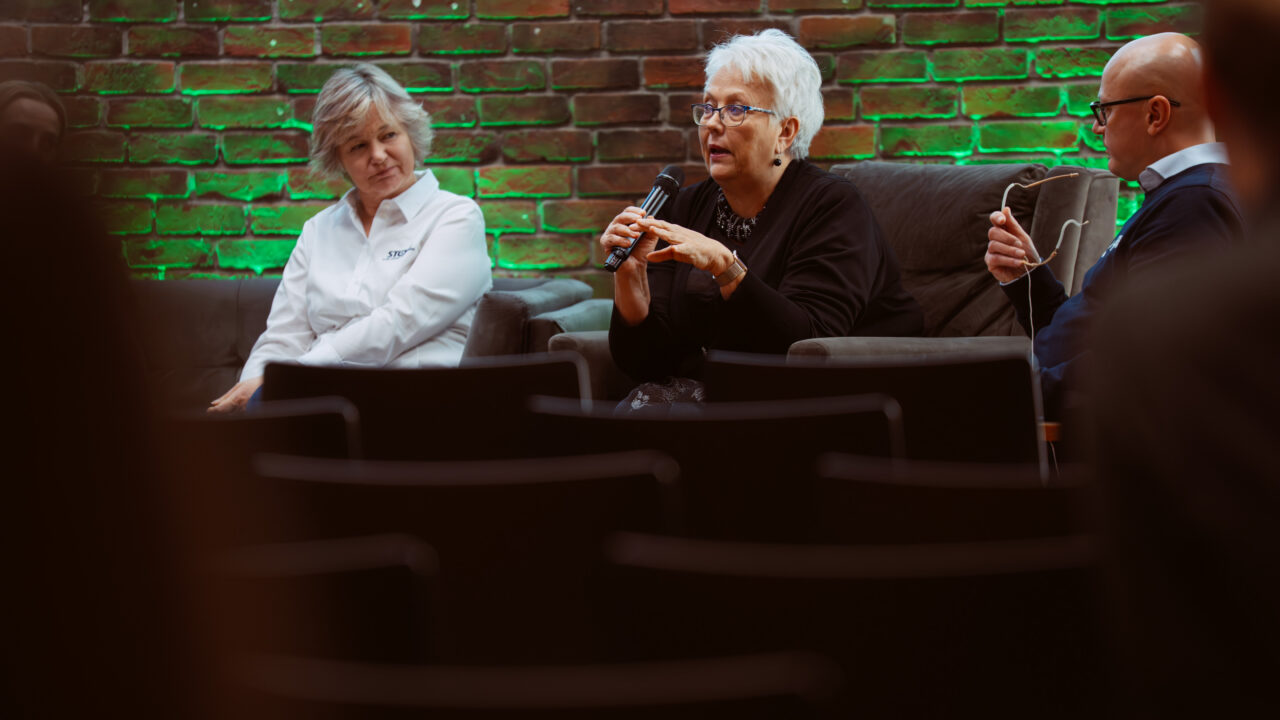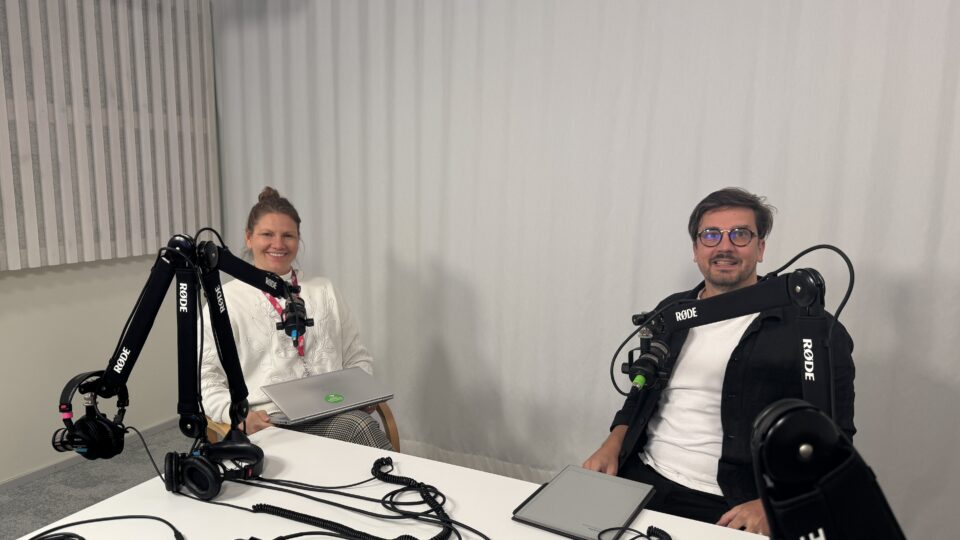Silver Tambur moderated a panel featuring Jaanika Merilo, digital services policy lead at the Ministry of Social Affairs; Terje Peetso, head of medical innovation at PERH; Siivi Kaldoja, HR manager at high-tech medical device manufacturer Karl Storz; and Rain Kuldjärv, head of the functional food and beverages group at TFTAK (Center of Food and Fermentation Technologies). The discussion focused on what might hinder Estonia’s breakthrough in health and food technology over the next decade and what missing links need to be added to the system to enable a faster innovation process.
Terje Peetso noted that although technology is evolving rapidly, the core processes in healthcare remain surprisingly resistant to change. “I would like us to have well-structured and standardized health data ten years from now,” Peetso emphasized, adding that improving data flow between stakeholders is equally important.
She gave a pointed example: “My store knows what I eat, but my health portal doesn’t; my pharmacy knows what I buy over the counter, but my e-prescription system doesn’t. We’re missing key pieces needed for a complete picture.” Peetso stressed that the healthcare of the future must be patient-centered and value-based. Right now, the overall picture breaks down the moment a patient leaves the hospital.
“I would like us to have well-structured and standardized health data ten years from now.”

n Merilo’s vision, within ten years the health portal could evolve into a personalised health and wellness gateway, bringing together a person’s genetic risks, early warning signs, and specific prevention recommendations, including everything related to nutrition. Photo: Virgo Haan.
Personalisation as the foundation of future healthcare
Jaanika Merilo agreed that there is plenty of room for improvement, but stressed that Estonia shouldn’t be too hard on itself. “We constantly criticise ourselves, and to some extent that’s good – it drives us forward – but on the other hand, we’re still a global leader in e-health and doing a damn good job.”
In Merilo’s vision, within ten years the health portal could evolve into a personal health and wellness gateway, bringing together a person’s genetic risks, early warning signs, and specific prevention recommendations, including everything related to nutrition.
In the context of food technology, Rain Kuldjärv highlighted that within a decade, artificial intelligence should be able to analyse a person’s diet from photos and provide personalised feedback. However, a complete picture only emerges when dietary data is combined with information about physical activity and daily habits, enhanced by individualised recommendations. “If medicine becomes personalised, the same must happen with nutrition – although data protection could definitely become an obstacle,” Kuldjärv noted.
Siivi Kaldoja reflected on the pace of change from an employer’s perspective. “I don’t know if this sounds backward, but I’d like to see fewer changes over the next ten years. It feels like everything is being transformed all at once, and I’m not sure what the outcome of that will be.”
When changes come too fast and too forcefully, they can create confusion and fatigue, as all systems need time and resources to adapt. Still, among the innovations are some that are already clearly outperforming older solutions. One such example, highlighted in a positive light, is e-consultation – a tool that helps prioritise needs more quickly and leads to better treatment outcomes.
“We constantly criticise ourselves, and to some extent that’s good – it drives us forward – but on the other hand, we’re still a global leader in e-health and doing a damn good job.”

Rain Kuldjärv noted that food-related development often stalls due to bureaucratic caution and slow approval processes. Photo: Virgo Haan.
Innovation versus bureaucracy
However, a key question emerged: why do many good solutions fail to reach practical application smoothly? According to Jaanika Merilo, one reason may be that the European regulatory framework can slow down the pace of innovation locally. It’s essential to strike a balance between evidence-based safety and the flexibility needed to avoid overly restrictive measures that stall or even halt development.
Merilo also pointed out that many initiatives and innovations are delayed due to an increasingly limited human resource pool.
Rain Kuldjärv noted that food innovation often stalls due to institutional caution and slow approval processes. There have been cases where testing of a new product has been allowed, but inconsistent interpretations have prevented those products from reaching the market. Meanwhile, similar products have already gone on sale in other European countries, putting Estonian companies and consumers at a disadvantage. According to Kuldjärv, clearer guidelines and more open communication would help bring innovative products to market more quickly and safely.
The missing link in the ecosystem
Alongside regulatory and workforce-related obstacles, another key issue emerged: the absence of a mechanism that swiftly connects specific needs with those able to provide solutions. “We know where the problem lies, but we don’t always know how to present it to the right target group capable of offering a solution,” noted Terje Peetso.
She highlighted a positive example from Israel: one hospital there has compiled issues identified by staff into a centralised system that allows health-related information to be directed to companies capable of providing targeted, needs-based solutions. According to Peetso, this kind of cooperation model enables clinical needs to be placed more effectively and quickly at the heart of innovation, offering patients smoother access to new solutions.
Merilo added that to accelerate the testing of solutions, the state is working on a sandbox-based approach – a controlled testing environment where new ideas can be trialled on a smaller scale without excessive bureaucracy, but under clear rules and supervision.
In conclusion, the discussion led to a clear insight: Estonia’s health and food technology sector holds great potential and strong ideas, but its progress is held back by fragmentation and bureaucracy. To reach a data space that supports preventive and personalised healthcare, unified principles, smooth collaboration, and a mechanism that quickly translates needs into solutions are essential.
Terje Peetso summed up the discussion with a pointed remark: “Stagnation, comrades, is regression.”
“We know where the problem lies, but we don’t always know how to present it to the right target group capable of offering a solution.”




